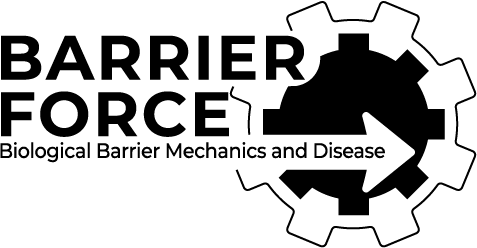Epithelia maintain a functional barrier during tissue turnover while facing varying mechanical stress. This maintenance requires both dynamic cell rearrangements driven by actomyosin-linked intercellular adherens junctions and ability to adapt to and resist extrinsic mechanical forces enabled by keratin filament-linked desmosomes. How these two systems crosstalk to coordinate cellular movement…
Author: Henok Karvonen
Unbreaking Assemblies in Molecular Simulations with Periodic Boundaries
In molecular simulations, periodic boundary conditions are typically used to avoid surface effects occurring at the boundaries of the simulation box. A consequence of this is that molecules and assemblies may appear split over the boundaries. Broken molecular assemblies make it difficult to interpret, analyze, and visualize molecular simulation data.
Polarity signaling balances epithelial contractility and mechanical resistance
Epithelia maintain a functional barrier during tissue turnover while facing varying mechanical stress. This maintenance requires both dynamic cell rearrangements driven by actomyosin-linked intercellular adherens junctions and ability to adapt to and resist extrinsic mechanical forces enabled by keratin filament-linked desmosomes. How these two systems crosstalk to coordinate cellular movement…
Surfactant Proteins SP-B and SP-C inPulmonary Surfactant Monolayers:PhysicalProperties Controlled by Specific Protein-LipidInteractions
The lining of the alveoli is covered by pulmonary surfactant, a complex mixture of surface-active lipids and proteins that enables efficient gas exchange between inhaled air and the circulation. Despite decades of advancements in the study of the pulmonary surfactant, the molecular scale behavior of the surfactant and the inherent…
Structural basis underlying specific biochemical activities of non-muscle tropomyosin isoforms
The actin cytoskeleton is critical for cell migration, morphogenesis, endocytosis, organelle dynamics, and cytokinesis. To support diverse cellular processes, actin filaments form a variety of structures with specific architectures and dynamic properties. Key proteins specifying actin filaments are tropomyosins. Non-muscle cells express several functionally non-redundant tropomyosin isoforms, which differentially control…
KSHV infection of endothelial precursor cells with lymphatic characteristics as a novel model for translational Kaposi’s sarcoma studies
Kaposi’s sarcoma herpesvirus (KSHV) is the etiologic agent of Kaposi’s sarcoma (KS), a hyperplasia consisting of enlarged malformed vasculature and spindle-shaped cells, the main proliferative component of KS. While spindle cells express markers of lymphatic and blood endothelium, the origin of spindle cells is unknown. Endothelial precursor cells have been…
Machine learning in the analysis of biomolecular Advances in physics: X simulations
Machine learning has rapidly become a key method for the analysis and organization of large-scale data in all scientific disciplines. In life sciences, the use of machine learning techniques is a particularly appealing idea since the enormous capacity of computational infrastructures generates terabytes of data through millisecond simulations of atomistic…
Biochemical and mechanical regulation of actin dynamics
Polymerization of actin filaments against membranes produces force for numerous cellular processes, such as migration, morphogenesis, endocytosis, phagocytosis and organelle dynamics. Consequently, aberrant actin cytoskeleton dynamics are linked to various diseases, including cancer, as well as immunological and neurological disorders. Understanding how actin filaments generate forces in cells, how force…
Cholesterol promotes clustering of PI(4,5)P2 driving unconventional secretion of FGF2
FGF2 is a cell survival factor involved in tumor-induced angiogenesis that is secreted through an unconventional secretory pathway based upon direct protein translocation across the plasma membrane. Here, we demonstrate that both PI(4,5)P2-dependent FGF2 recruitment at the inner plasma membrane leaflet and FGF2 membrane translocation into the extracellular space are…
